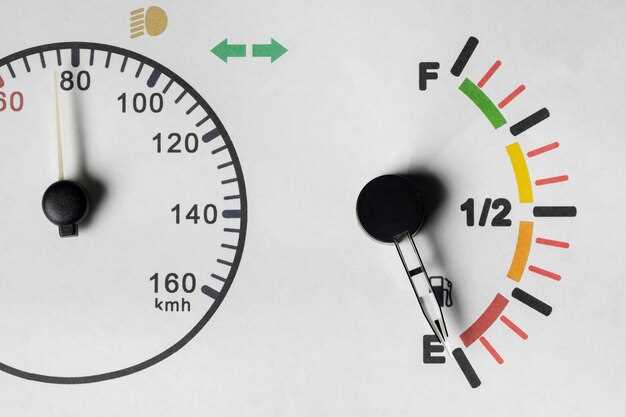
The check engine light (CEL) is one of the most important indicators on your vehicle’s dashboard. It serves as a warning system, alerting drivers to potential issues within the engine or related components. Ignoring this crucial signal can lead to more significant problems down the road, making it essential to understand what it means when it illuminates.
Modern vehicles are equipped with complex onboard diagnostics (OBD) systems that continuously monitor the performance and emissions of the engine. When the CEL lights up, it indicates that the OBD system has detected a malfunction that requires attention. This could range from a minor issue, such as a loose gas cap, to more serious problems like engine misfires or failing emissions components.
In many cases, the check engine light will be accompanied by other symptoms, such as decreased fuel efficiency, unusual noises, or rough idling. It is vital to address these signs promptly to ensure the longevity and performance of your vehicle. Ignoring the check engine light can not only compromise your car’s efficiency but also lead to costly repairs in the future.
In this article, we will delve deeper into the common reasons behind a glowing check engine light and provide insights on how to troubleshoot the issue effectively. Understanding the meaning behind this warning light can empower you to make informed decisions about vehicle maintenance and repairs.
Common Causes of the Check Engine Light Activation

The Check Engine Light (CEL) can illuminate for various reasons, indicating potential issues with your vehicle. Understanding these causes is crucial for timely repairs and maintaining vehicle performance.
One of the most common reasons for the CEL activation is a loose or damaged gas cap. When the gas cap is not properly secured, it can cause fuel vapors to leak, triggering the light as a warning to check the sealing system.
An issue with the oxygen sensor is another frequent cause. This sensor monitors the level of oxygen in the exhaust gases. A faulty sensor can lead to reduced fuel efficiency and increased emissions, prompting the check engine light to activate.
Engine misfires are also significant contributors to CEL illumination. Misfires can occur due to faulty spark plugs, ignition coils, or fuel injectors. When the engine fails to run smoothly, it can cause increases in emissions, thus triggering the light.
Issues with the catalytic converter can lead to CEL activation as well. The catalytic converter is responsible for reducing harmful emissions, and any failure in this component can affect vehicle performance and emissions, causing the light to turn on.
Another potential cause is a malfunctioning mass airflow sensor (MAF). This sensor measures the amount of air entering the engine and plays a critical role in the fuel management system. A faulty MAF sensor can result in sluggish performance and poor fuel economy, causing the CEL to illuminate.
Finally, transmission issues can also trigger the check engine light. Problems like low transmission fluid or malfunctions within the transmission system may lead to the activation of the light as a warning to address these critical issues.
Recognizing these common causes of CEL activation helps in diagnosing problems early, ensuring that your vehicle remains in good condition and operates efficiently.
Steps to Diagnose the Issue Behind the Check Engine Light
When the check engine light illuminates, it signals a range of potential issues that may affect your vehicle’s performance. Following a systematic approach to diagnosis can help identify the problem accurately.
1. Check for Obvious Issues
Begin your diagnosis by inspecting the vehicle for any obvious problems. Look for loose or disconnected hoses, damaged wiring, or leaks under the hood. Make sure the gas cap is tight, as a loose cap can trigger the light.
2. Use an OBD-II Scanner
Connect an On-Board Diagnostics II (OBD-II) scanner to your vehicle’s diagnostic port. This tool reads error codes from the car’s engine control unit (ECU), providing valuable insights into the specific issues causing the check engine light to activate. Make a note of any codes retrieved.
3. Research the Error Codes
After obtaining the error codes, research their meanings. Each code corresponds to a specific system or component within your vehicle, helping narrow down the potential causes of the problem. Consult your vehicle’s manual or online resources for interpretations.
4. Perform Visual Checks
Conduct a thorough visual inspection of the components related to the error codes. Check for signs of wear or damage in sensors, the intake system, and exhaust components. Ensure that all connections are secure and that there are no visible fluid leaks.
5. Check for Electrical Issues
Examine the electrical systems associated with the codes. Faulty wiring, corroded connections, and blown fuses can trigger the check engine light. Use a multimeter to test voltage and continuity in circuits related to the flagged components.
6. Consult a Professional Mechanic
If you are unable to pinpoint the issue after your own diagnosis, it may be necessary to consult a professional mechanic. They have advanced diagnostic equipment and experience to identify complex problems that may not be apparent during a basic inspection.
7. Reset the Check Engine Light
Once the necessary repairs are made, reset the check engine light using the OBD-II scanner. This will clear the stored codes from the ECU. Keep an eye on the light after driving for a short period; if it returns, further investigation may be required.
What to Do After Identifying the Problem with Your Check Engine Light

Once you have identified the issue indicated by your check engine light, the next steps involve determining the most effective course of action. First, consult your vehicle’s owner manual for specific guidance related to the identified problem and any recommended maintenance. This can provide useful context on how urgent the issue may be.
If the issue requires immediate attention, such as engine overheating or significant performance loss, prioritize getting your vehicle to a professional mechanic as soon as possible. Continuing to drive with serious problems can lead to further damage and costly repairs.
If the problem seems less severe, consider gathering more information. For example, related symptoms may provide additional context. Monitor your vehicle’s performance and behavior, observing any unusual noises or changes in efficiency. This analysis can offer valuable insights to your mechanic.
Before taking your car to a repair shop, conduct an online search for common fixes or recalls associated with your vehicle’s make and model. This knowledge can prepare you for discussions with the technician and help you better understand potential repair costs.
After the repair, ensure you ask for clarity on the problem, the solutions taken, and any preventative measures you can adopt to avoid similar issues in the future. Keeping a record of your vehicle’s maintenance history related to the check engine light can also be beneficial for future references.
Lastly, consider implementing regular vehicle maintenance checks to detect issues early. An annual inspection or routine diagnostic tests can help you stay ahead of potential problems, ensuring your vehicle operates smoothly and efficiently.





